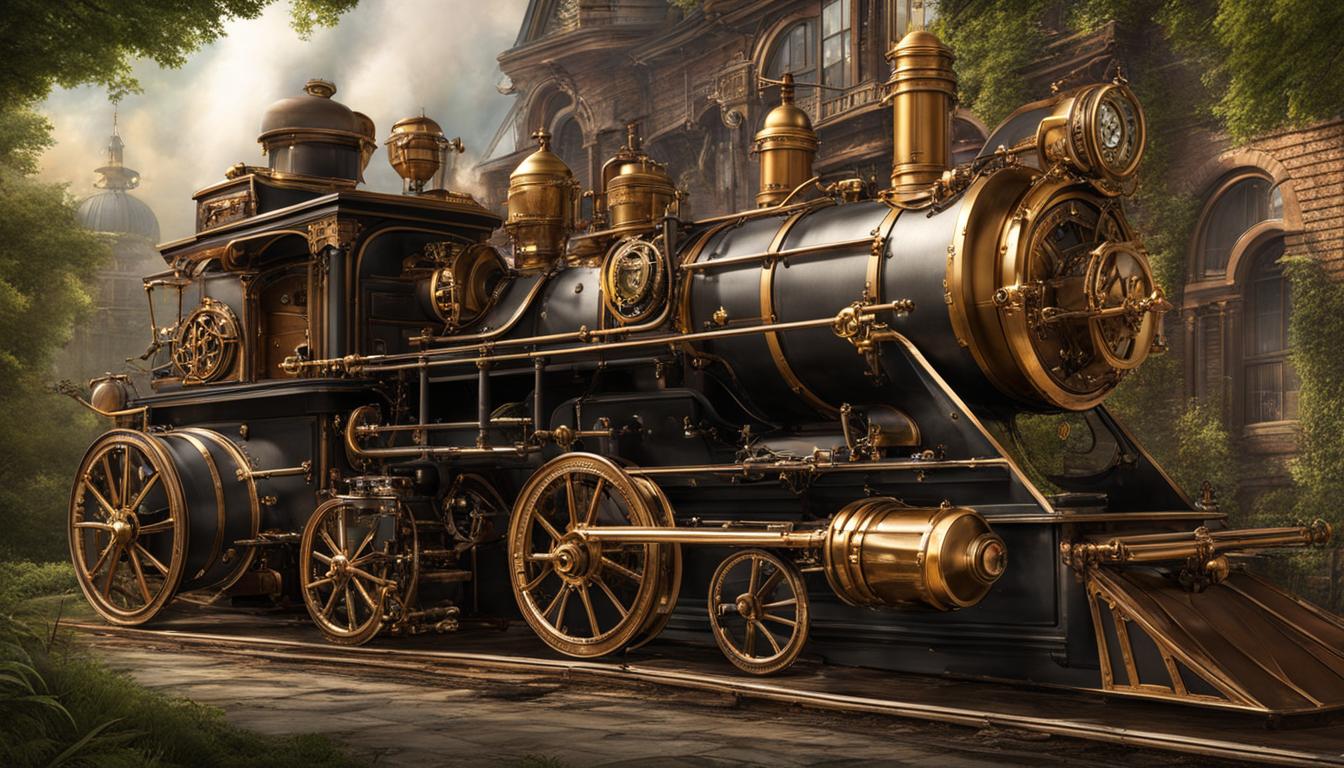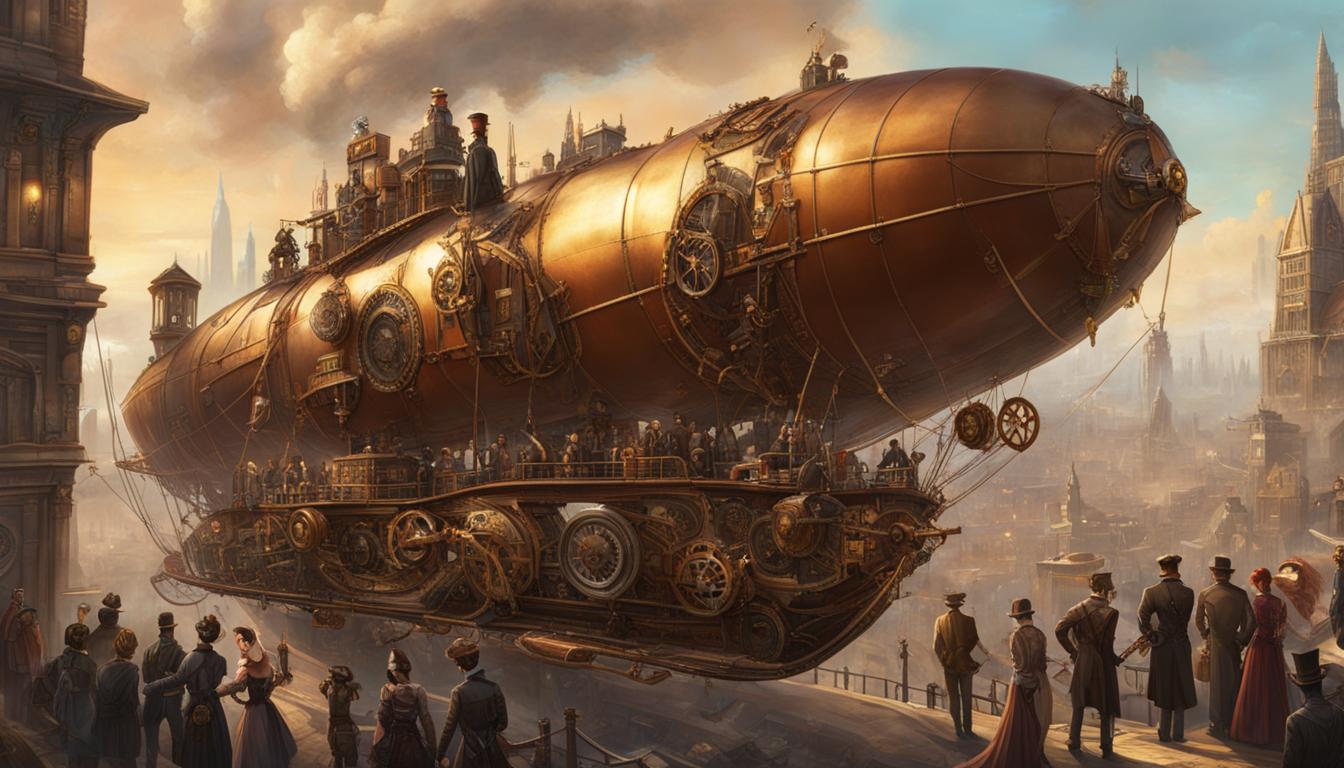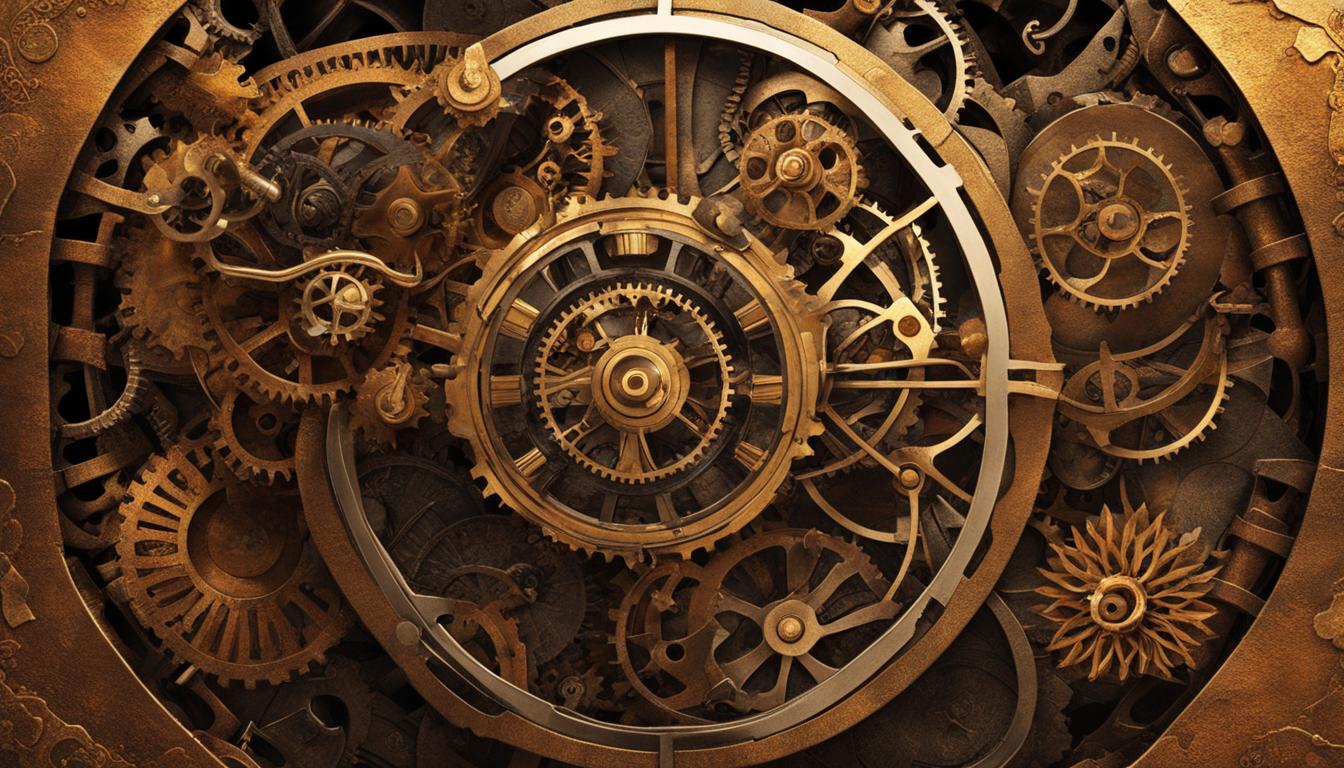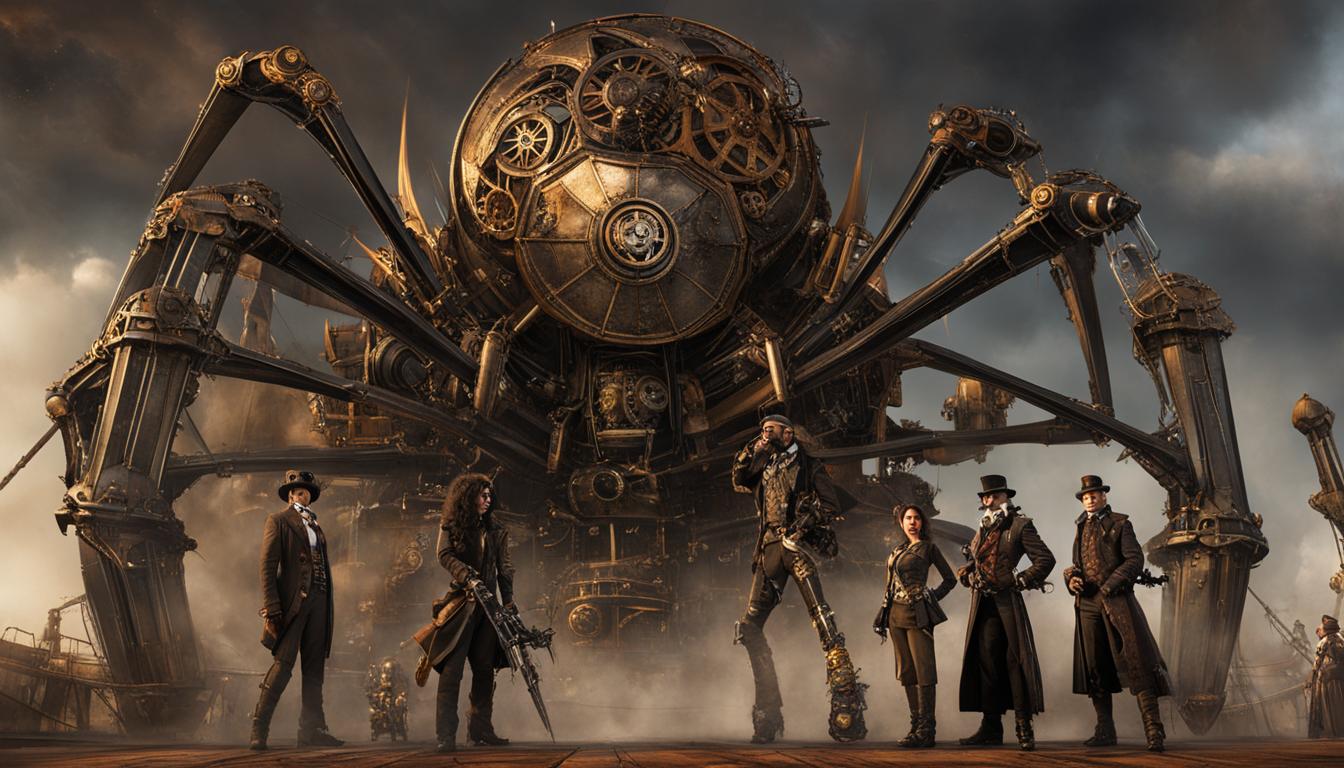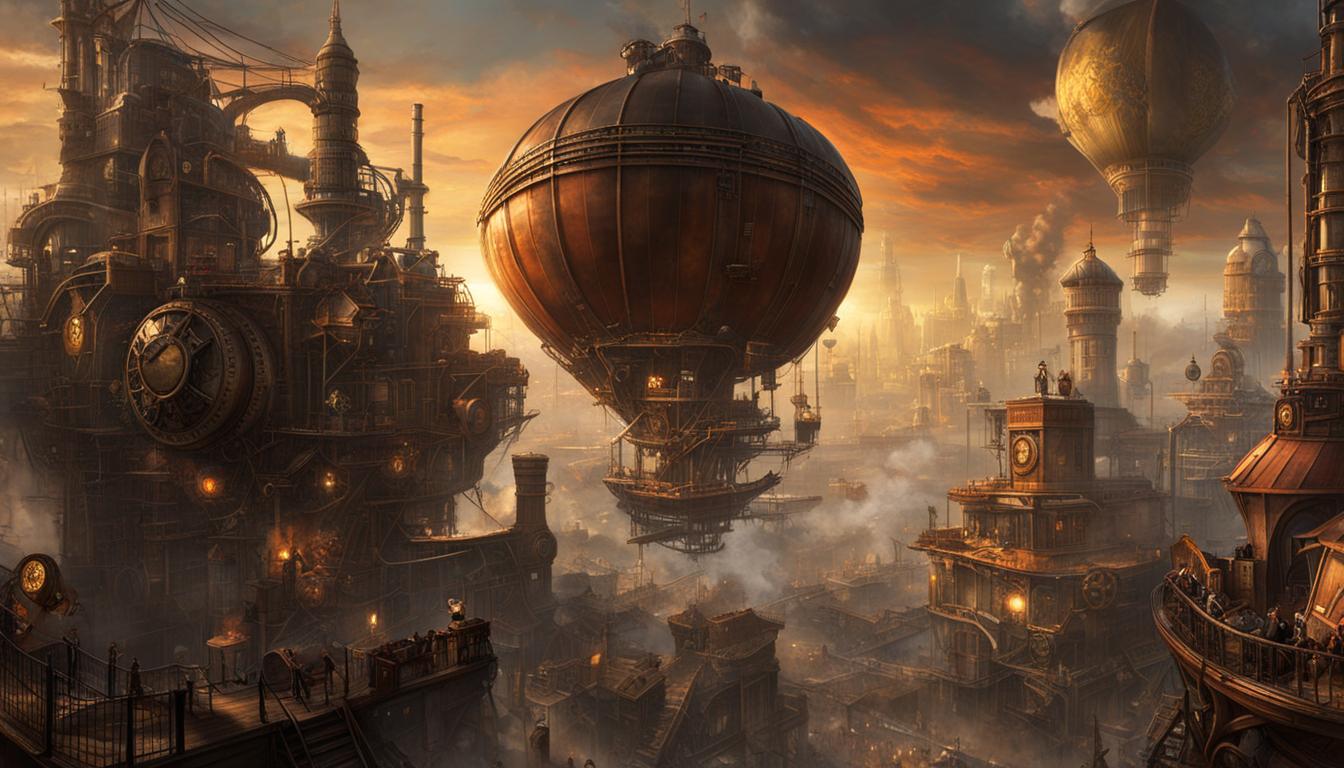Steampunk is a captivating subgenre of science fiction that seamlessly blends historical accuracy with imaginative storytelling. Transporting readers, gamers, and enthusiasts to a visually captivating world, steampunk combines retrofuturistic technology with the aesthetics of 19th-century steam-powered machinery.
Steampunk settings often take inspiration from the Victorian era or the American “Wild West,” where steam power was prevalent. These alternative histories embrace the spirit of invention and discovery, inviting exploration of what could have been. While steampunk incorporates elements of real-world fashion, culture, and architecture, it also incorporates fantasy, horror, historical fiction, and alternate history.
While historical accuracy is a significant aspect of steampunk, authors and artists have the freedom to imagine and create their own versions of the past. Steampunk tales may include fictional machines, airships, and advanced technologies that were not available in the Victorian era. This blending of fact and fiction allows for unique and captivating narratives.
Key Takeaways:
- Steampunk is a genre that combines historical accuracy with imaginative storytelling.
- Steampunk settings often take inspiration from the Victorian era or the American “Wild West.”
- While steampunk incorporates real-world elements, it also embraces fantasy, horror, historical fiction, and alternate history.
- Authors and artists have the freedom to create their own versions of the past in steampunk works.
- Steampunk allows for the blending of fact and fiction, resulting in captivating narratives.
The Influence of Steam Power on Steampunk Settings
Steam power played a crucial role in shaping the aesthetics and technology of steampunk settings. The advent of steam power during the Victorian era brought about significant advancements in transportation and industry. Steam-powered ships, trains, and vehicles became common, and steam engines were used in factories and textile mills. The elegance and precision of steam-powered machinery, with its shiny metallic appearance, became a prominent feature of the Victorian era.
This influence is reflected in the clean, shiny look of steampunk paraphernalia, with its incorporation of gears, cogs, and mechanical pipes. The use of steam power in steampunk narratives adds a sense of authenticity to the settings, as it aligns with the technological innovations of the historical period. Steam-powered machinery and inventions serve as symbols of progress, and their presence in steampunk stories helps to create a unique blend of history and fantasy.
While the Victorian era had its elegance and advancements, it was not favorable for everyone, with many people living in poverty and hardship. Steampunk literature and art often juxtapose the elegance and innovation of the Victorian era with the harsh realities faced by the majority of the population. This contrast adds depth and complexity to steampunk narratives, allowing them to explore social issues while still embracing the allure of a bygone era.
Table: Comparison of Steam Power in Steampunk Settings
| Characteristic | Historical Reality | Steampunk Interpretation |
|---|---|---|
| Technological Advancements | Steam-powered transportation and industry | Steam-powered airships and advanced machinery |
| Visual Aesthetics | Utilitarian and functional | Ornate and decorative with exposed gears and cogs |
| Social Impact | Class divide and socioeconomic disparities | Exploration of social issues within alternative histories |
| Sense of Wonder | Innovation and progress | Fantasy and imagination blended with historical context |
The use of steam power in steampunk settings not only adds a touch of historical fidelity but also serves as a driving force for the narrative and world-building. It allows readers and audiences to immerse themselves in an alternative version of history, where steam-powered technology shapes a fantastical and visually stunning world. The combination of historical accuracy and imaginative storytelling is what makes steampunk such a unique and captivating genre.
“Steampunk is the perfect fusion of steam power and the limitless imagination of the human mind.” – Unknown
Steampunk and Historical Accuracy
Steampunk is a genre that blends fact and fiction, allowing for creative interpretations of history. While steampunk often incorporates historical elements and settings, it is not bound by strict historical accuracy. Instead, it takes inspiration from history and presents a fantastical version of the past. Steampunk stories may include fictional machines, airships, analog computers, and other technological marvels that were not actually present in the Victorian era. The genre allows for the exploration of “what if” scenarios and alternative histories. Steampunk authors and artists have the freedom to imagine advanced technology and machinery based on the aesthetics and principles of the Victorian era, but not necessarily limited by historical constraints. Therefore, while steampunk settings may have elements of historical accuracy, they also embrace the imaginative and fantastical.
One of the main appeals of steampunk lies in its ability to blend the familiar with the extraordinary. By incorporating elements of history into its narratives, steampunk creates a sense of nostalgia and familiarity while offering a fresh and imaginative take on the past. Steampunk authors and artists often research and draw inspiration from the Victorian era, incorporating real historical events and figures into their works. However, they do not feel constrained by the need for strict adherence to historical accuracy. Instead, they use historical references as a starting point for their creative explorations, taking liberties to introduce fantastical elements and technologies that add to the unique charm of the genre.
Steampunk’s approach to historical accuracy can be seen as a form of artistic license. By blending fact and fiction, steampunk authors and artists create a distinct and captivating world that captures the essence of the Victorian era while allowing for imaginative departures. This blending of history and fantasy appeals to readers and enthusiasts who appreciate the genre’s ability to transport them to a world that is both familiar and fantastical. Steampunk’s historical realism lies in its ability to evoke the spirit and aesthetics of the Victorian era, even if it does not strictly adhere to all historical details.
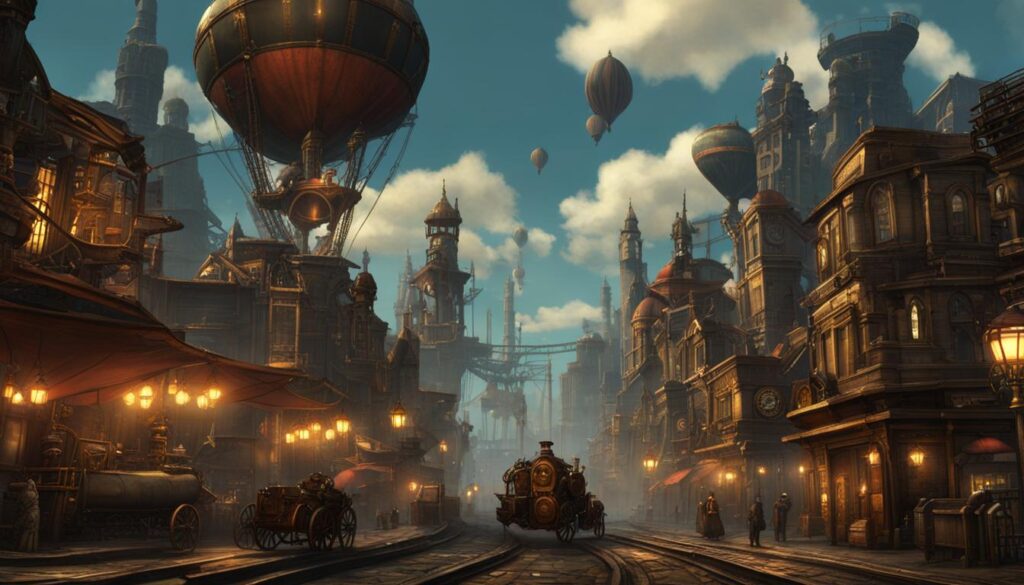
The Impact of Steampunk on Game Design
Steampunk’s influence on game design extends beyond its visual aesthetics. The genre has inspired game developers to create intricate and innovative worlds filled with mechanical wonders, alternate histories, and fantastical inventions. The attention to detail in steampunk game design has allowed players to fully immerse themselves in these rich and atmospheric environments.
Steampunk games often feature elaborate and visually stunning machinery, including steam-powered vehicles, robots, and intricate clockwork mechanisms. These mechanical marvels serve not only as eye-catching visuals but also as integral parts of the gameplay, providing players with unique abilities and tools to navigate the game world.
Furthermore, the blend of historical references and fictional elements in steampunk games creates a sense of nostalgia for the Victorian era while also allowing for imaginative storytelling. By seamlessly incorporating historical accuracy with fantastical elements, steampunk games offer players a captivating and thought-provoking experience that combines the familiar and the extraordinary.
Steampunk in Visual Arts and Media
Steampunk has not only influenced literature and gaming but has also made its mark in visual arts and media. Artists have embraced the aesthetics of steampunk, creating paintings, sculptures, and other forms of artwork that blend Victorian-era fashion, machinery, and fantastical elements. Fashion designers have also been inspired by steampunk, creating elaborate costumes that incorporate corsets, gears, and other mechanical details.
In the world of movies and TV shows, steampunk has been featured prominently. One notable example is the TV series “The Wild Wild West,” which combined the Western genre with steampunk elements, showcasing an alternative history where advanced technology exists in the Old West. Movies like “Brazil” and “Sky Captain and the World of Tomorrow” also incorporate steampunk themes, offering visually stunning and immersive experiences. These visual representations often showcase the fusion of retrofuturistic technology, Victorian fashion, and imaginative storytelling, capturing the essence of the steampunk genre.
Here is an example table to showcase the influence of steampunk in different art forms and media:
| Art Form/Media | Examples |
|---|---|
| Visual Arts | Steampunk-inspired paintings, sculptures, and installations |
| Fashion | Steampunk-inspired clothing, costumes, and accessories |
| Movies/TV Shows | “The Wild Wild West,” “Brazil,” “Sky Captain and the World of Tomorrow” |
Steampunk’s visual appeal and imaginative storytelling continue to captivate audiences, making it a significant presence in the world of art and media.
Steampunk as a Dynamic Genre
Steampunk is more than just a genre; it is a dynamic and ever-evolving movement that has left a lasting impact on popular culture. From its humble beginnings in the works of authors like K.W. Jeter and Tim Powers, steampunk has grown to encompass a wide range of artistic mediums, including literature, gaming, fashion, art, and even music. This genre has captured the imaginations of countless fans around the world, inspiring them to create their own steampunk-themed crafts, costumes, and artworks.
The evolution of steampunk can be seen in the way it has influenced various fields. In literature, steampunk stories have expanded beyond the written word, branching out into graphic novels and comics. Gaming has embraced the steampunk aesthetic, with numerous titles featuring Victorian-era settings, steam-powered machinery, and imaginative storytelling. Steampunk fashion has become a subculture of its own, with enthusiasts donning elaborate costumes adorned with gears, corsets, and other mechanical details.
Steampunk has become more than just a genre; it has become a subculture and a lifestyle for many enthusiasts.
Steampunk’s impact on popular culture can also be seen in movies and TV shows. The fusion of retrofuturistic technology, Victorian fashion, and imaginative storytelling has captured the attention of audiences, resulting in memorable productions like the TV series “The Wild Wild West” and movies such as “Brazil” and “Sky Captain and the World of Tomorrow.”
| Steampunk’s Influence | Field |
|---|---|
| Literature | Expanded into graphic novels and comics |
| Gaming | Inspired numerous titles with Victorian-era settings |
| Fashion | Created a subculture with elaborate steampunk costumes |
| Movies and TV Shows | Produced memorable productions with retrofuturistic aesthetics |
Steampunk’s enduring popularity can be attributed to its ability to transport people to a different time and place, where technology and imagination collide in a visually captivating and intellectually stimulating way. As long as there are fans who appreciate the blend of historical accuracy and fantastical storytelling, steampunk will continue to captivate and inspire.
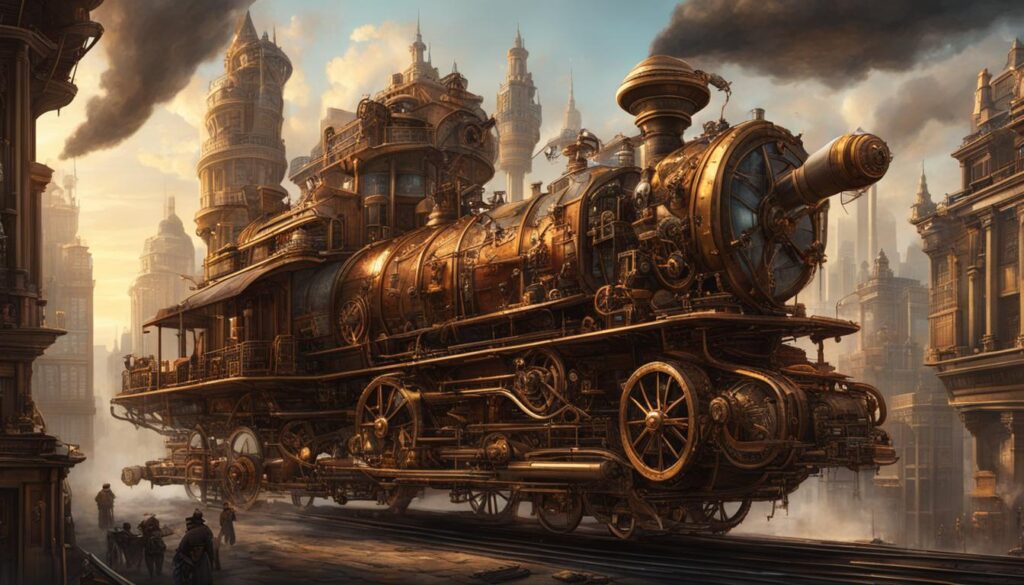
The Power of Imagination
At its core, steampunk represents the power of imagination. It invites us to envision a world where steam power reigns supreme and where Victorian elegance and innovation coexist with daring adventures and fantastical inventions. Steampunk is not bound by the constraints of historical accuracy, instead offering a creative playground where authors, artists, and enthusiasts can push the boundaries of possibility.
- Steampunk as a genre allows for the exploration of “what if” scenarios and alternative histories.
- It sparks our curiosity and challenges us to think beyond the limitations of the present.
- Steampunk embodies the spirit of invention and discovery, reminding us of the transformative power of human imagination.
With its enduring allure and ever-evolving nature, steampunk continues to inspire and captivate audiences, leaving an indelible mark on popular culture. Whether it’s through literature, gaming, fashion, or visual arts, steampunk offers a captivating escape into a world that seamlessly blends fact and fiction, history and fantasy.
The Enduring Allure of Steampunk
Steampunk has captured the hearts and imaginations of fans around the world, becoming a beloved subculture and a prominent fixture in popular culture. Its unique blend of history, fantasy, and adventure continues to resonate with audiences, making it a genre that stands the test of time.
From literature to gaming, steampunk has left its mark in various forms of media, captivating enthusiasts with its visually captivating aesthetics and rich storytelling. The popularity of steampunk can be attributed to its ability to transport people to a different era, where steam-powered machinery and the wonders of the Victorian era collide.
With its enduring popularity, steampunk has grown beyond its literary origins to become a lifestyle and a vibrant community. Fans eagerly embrace the fashion, art, and craftsmanship inspired by the genre, creating their own unique steampunk-themed creations. Steampunk conventions and events attract enthusiasts from all walks of life, celebrating the genre’s enduring allure.
Steampunk’s popularity in popular culture shows no signs of waning. Its ability to blend historical accuracy with imaginative storytelling continues to captivate and inspire, offering a glimpse into a world that is both nostalgic and fantastical. As long as there are fans who appreciate the beauty and intrigue of steampunk, its allure will endure.
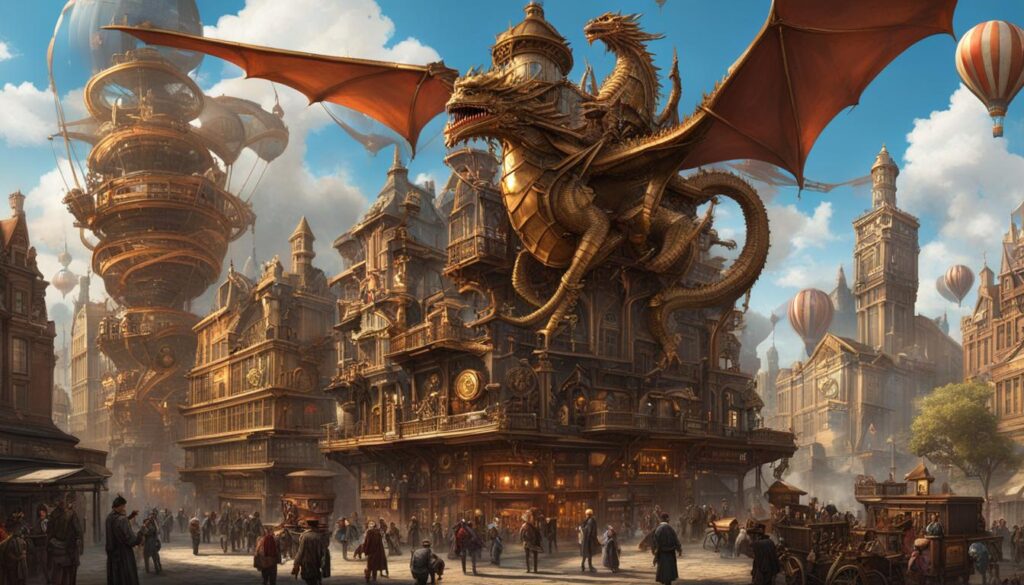
Steampunk in Popular Culture
The influence of steampunk can be seen in various aspects of popular culture, from fashion to film. Steampunk-inspired fashion has made its way to runways and everyday wear, with its distinctive blend of Victorian elegance and mechanical embellishments. Movies and TV shows have embraced the steampunk aesthetic, transporting audiences to intricate worlds filled with airships, clockwork contraptions, and adventure.
The enduring appeal of steampunk lies in its ability to offer an escape from reality, inviting audiences to explore a world that never was but could have been. With its rich visual tapestry, imaginative storytelling, and the spirit of invention, steampunk continues to captivate and inspire, solidifying its place in popular culture.
Conclusion
Steampunk, with its blend of historical accuracy and imaginative storytelling, offers a captivating exploration of alternative histories and technologies. While it may not adhere strictly to historical authenticity, steampunk embraces the spirit of invention and discovery, inviting readers, gamers, and enthusiasts to immerse themselves in a world that seamlessly blends fact and fiction.
The enduring popularity of steampunk is a testament to its ability to captivate imaginations and inspire creativity. Whether in literature, gaming, art, or fashion, steampunk continues to shape and evolve, leaving its indelible mark on popular culture. Its allure lies in the intricate balance between historical accuracy and fantastical storytelling, offering a rich and immersive experience for fans around the world.
So, whether you’re fascinated by the intricacies of Victorian-era machinery or drawn to the allure of an alternative history, steampunk is sure to satisfy your hunger for historical authenticity and imaginative storytelling. Embrace the spirit of blending fact and fiction, and embark on a journey through the realms of steam power, innovative inventions, and daring adventures. Steampunk awaits, ready to transport you to a bygone era where history and fantasy coexist in perfect harmony.
FAQ
What is steampunk?
Steampunk is a subgenre of science fiction that combines retrofuturistic technology with the aesthetics of 19th-century steam-powered machinery.
What time period does steampunk usually take place in?
Steampunk is often set in an alternative history of the Victorian era or the American “Wild West,” where steam power remains prevalent.
What are the key elements of steampunk?
Steampunk combines elements of retrofuturistic technology, fashion, culture, architecture, and art from the Victorian era. It also incorporates elements of fantasy, horror, historical fiction, and alternate history.
Who coined the term “steampunk”?
The term “steampunk” was coined in 1987 by science fiction author K.W. Jeter.
What influenced the aesthetics of steampunk?
The aesthetics of steampunk are heavily influenced by the elegance and precision of steam-powered machinery from the Victorian era, with its shiny metallic appearance and incorporation of gears, cogs, and mechanical pipes.
Is steampunk historically accurate?
While steampunk takes inspiration from history and incorporates historical elements, it is not bound by strict historical accuracy. It presents a fantastical version of the past and allows for creative interpretations of history.
How has steampunk influenced gaming?
Steampunk has had a significant influence on the world of video games, with many titles embracing its unique aesthetic and blending it with gameplay elements. It has introduced elements of retrofuturistic technology and Victorian-era aesthetics into gaming worlds.
How has steampunk influenced visual arts and media?
Steampunk has inspired artists to create paintings, sculptures, and other forms of artwork that blend Victorian-era fashion, machinery, and fantastical elements. It has also been featured in movies and TV shows, showcasing the fusion of retrofuturistic technology, Victorian fashion, and imaginative storytelling.
Is steampunk just a genre or a subculture?
Steampunk has become more than just a genre; it has become a subculture and a lifestyle for many enthusiasts. It has spawned communities, conventions, and events dedicated to celebrating the genre.
Why is steampunk enduringly popular?
The enduring allure of steampunk lies in its ability to transport people to a different time and place, where technology and imagination collide in a visually captivating and intellectually stimulating way. It resonates with audiences who appreciate its aesthetic appeal and the sense of adventure it evokes.

